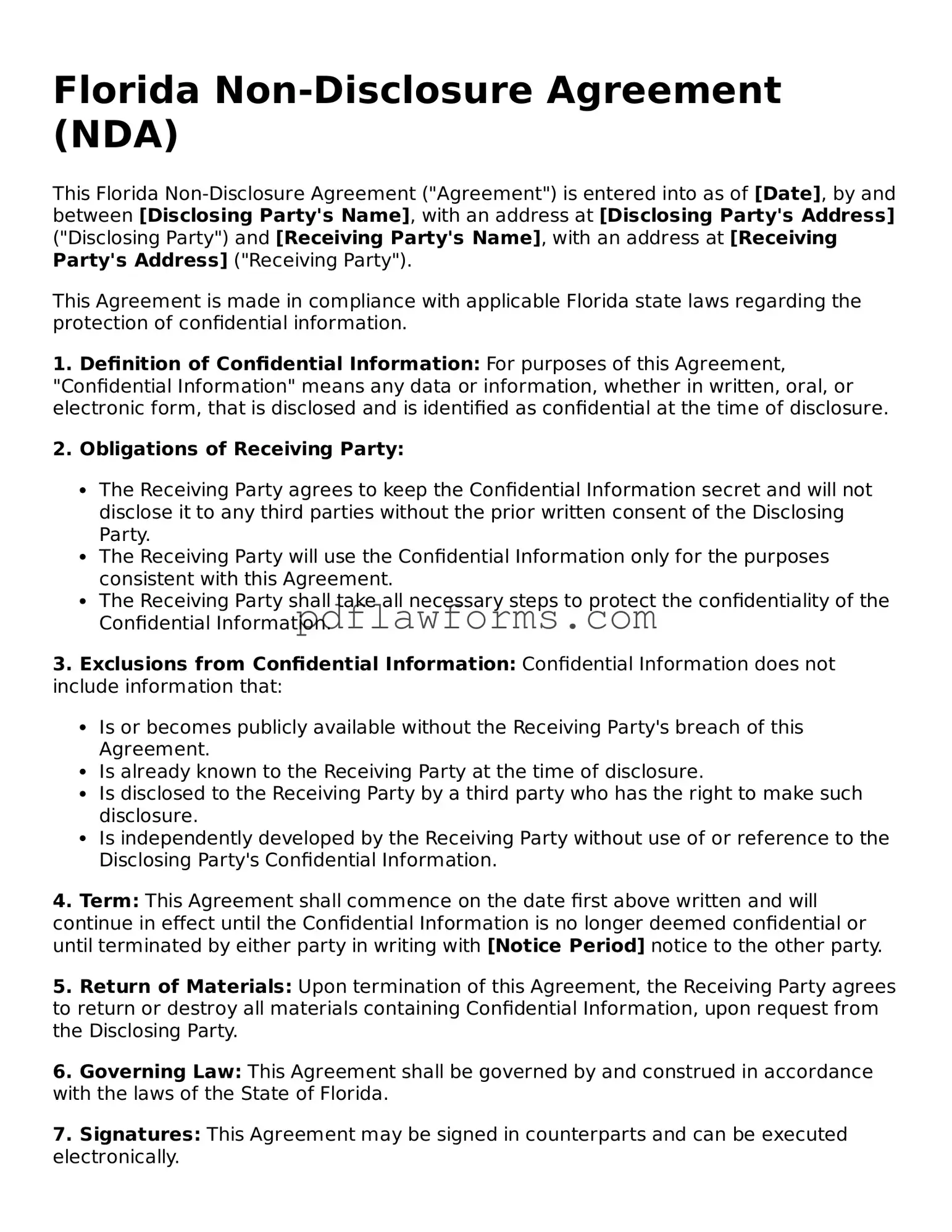Non-disclosure Agreement Form for the State of Florida
A Florida Non-disclosure Agreement (NDA) is a legal document designed to protect sensitive information shared between parties. By signing this agreement, individuals or businesses commit to keeping confidential information private and secure. If you're ready to safeguard your valuable information, fill out the form by clicking the button below.
Make My Document Online
